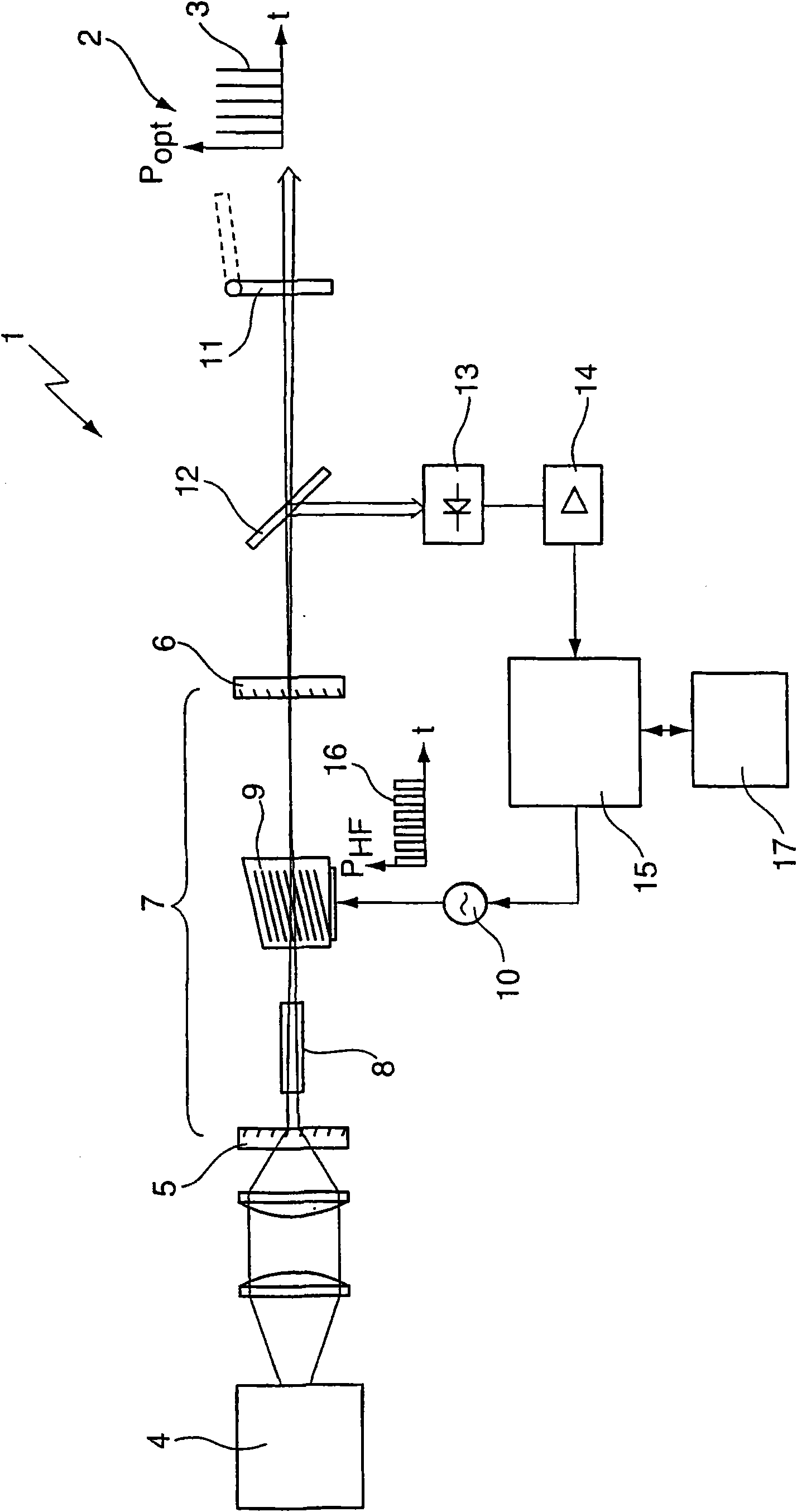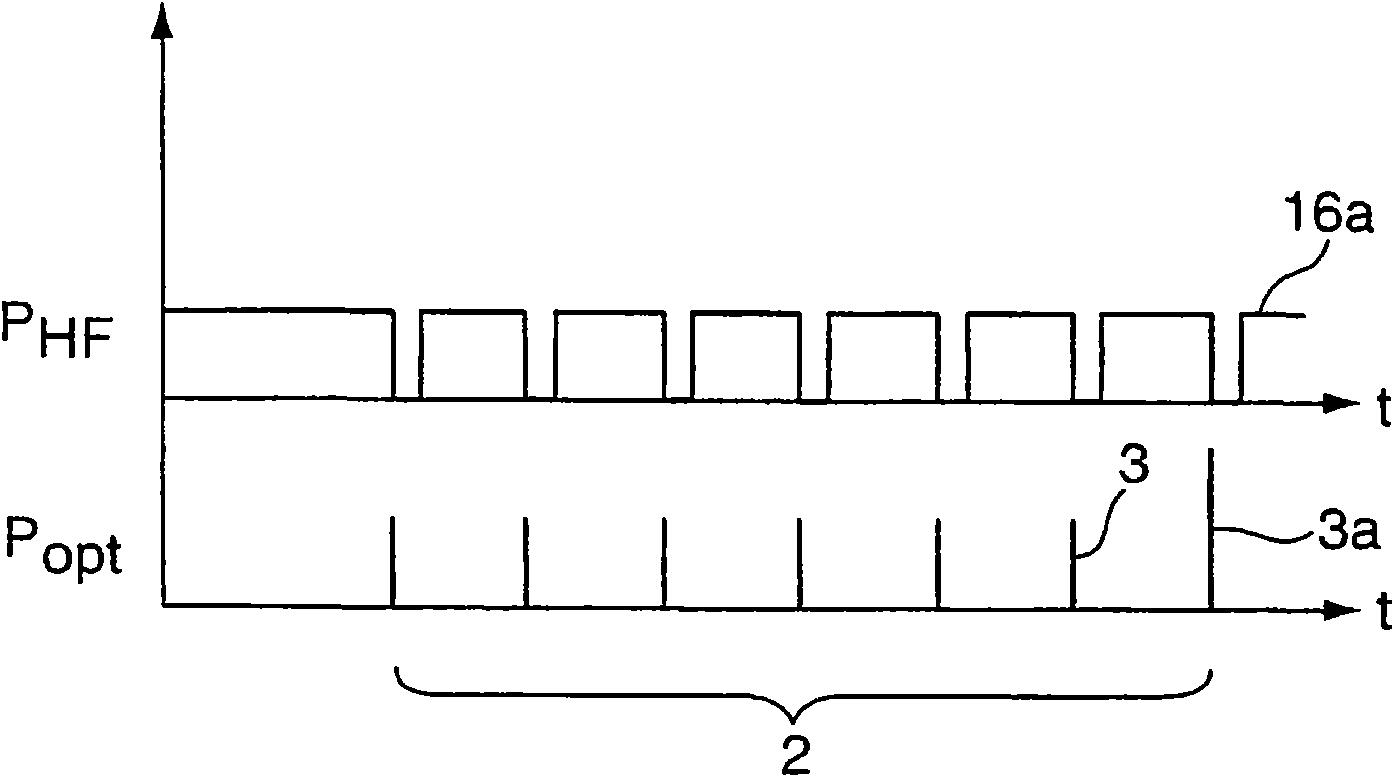Method for first-pulse optimization in Q-switched solid-state lasers and Q-switched solid state laser
A solid-state laser and switching technology, applied in lasers, laser components, phonon exciters, etc., can solve problems such as manual optimization, different optimal parameter values, and manual intervention.
- Summary
- Abstract
- Description
- Claims
- Application Information
AI Technical Summary
Problems solved by technology
Method used
Image
Examples
Embodiment Construction
[0034] exist figure 1 The Q-switched solid-state laser 1 shown in is used to generate a pulse train 2 consisting of a number of individual pulses 3 with as constant a pulse energy as possible.
[0035] The solid-state laser 1 comprises a pump source 4, a laser resonator 7 and an HF driver 10, the laser resonator is defined by a highly reflective mirror 5 and an output coupling mirror 6 for the lasing light, in the laser resonator Housed in the cavity is a laser-active medium (laser medium) 8 pumped by a pump source 4 and an active Q-switch (Q-Switch) in the form of an acousto-optic modulator (AOM) 9 , the HF driver 10 for controlling the AOM 9 . Doped with rare earth ions (ND 3+ , Yb 3+ , Er 3+ ) base crystal (YAG, YVO 4 , YLF, GdVO 4 ) as the laser medium 8. These crystals are characterized by laser transitions with fluorescence lifetimes from tens of microseconds to milliseconds and are thus able to store in the Q-switched laser resonator 7 the energy pumped into the l...
PUM
 Login to View More
Login to View More Abstract
Description
Claims
Application Information
 Login to View More
Login to View More - R&D
- Intellectual Property
- Life Sciences
- Materials
- Tech Scout
- Unparalleled Data Quality
- Higher Quality Content
- 60% Fewer Hallucinations
Browse by: Latest US Patents, China's latest patents, Technical Efficacy Thesaurus, Application Domain, Technology Topic, Popular Technical Reports.
© 2025 PatSnap. All rights reserved.Legal|Privacy policy|Modern Slavery Act Transparency Statement|Sitemap|About US| Contact US: help@patsnap.com



